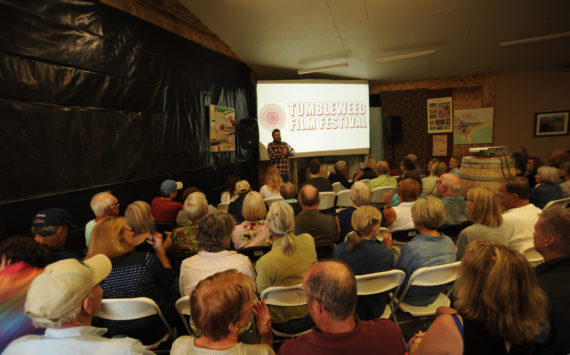
Principal, Rocky Mountain Econometrics
Okanogan County PUD Commissioner Ernie Bolz, a fervent proponent of repowering Enloe Dam, wrote a curious letter to editor the other day. He started by falsely accusing this paper of not checking with the PUD before going to press. He also called my analysis bogus for suggesting that open market power is a viable alternative to Enloe Dam.
Mr. Bolz was dismissive of low priced open market power because, 1, natural gas fired power plants produce inexpensive power as a result of low cost natural gas produced via fracking drilling techniques And, 2, market prices are depressed courtesy of federally subsidized wind power.
My observation is that there is truth in both of those observations. However, those are reasons to trust the open market, not avoid it. Both of those factors and the resultant low cost energy are already in place. The same forces depressing current open market power prices will continue to depress open market power for ensuing decades. It makes sense to take advantage of the low prices.
Bolz takes further issue with open market power because of the variability of prices, stating that, “As recently as the winter of 2015, your PUD was forced to buy power for $100 a megawatt . . . “.
Again, there is truth in that statement, but there is quite a bit he leaves out. Like any well functioning market the open market for electricity fluctuates. Prices on the open market follow well-documented predictable paths that vary day-by-day, month-by-month, year-by-year. And, yes, there are occasional spikes where the price can be disturbingly high before the market corrects itself. But to focus on only the spikes misses the bigger picture.
As Mr. Bolz noted, in 2015 the open market price of electricity exceeded $100 per MWH. What he left out was that prices exceeded $100 for a scant five hours. As always, the market corrected itself. Additional cheaper generation sources were brought online and demand slackened, as usual, as the day progressed. The combined forces brought prices back down. That is the way efficient markets work. For the full 2015 calendar year those five hours of $100+ prices were easily absorbed into the thousands of hours of lower prices. The average open market price for 2015 was a very reasonable $32.45/MWH.
2015 was not an anomaly. Even in the face of occasional price spikes, the average price for electricity in the northwest as documented by the open market at the California – Oregon border for the 14 years since 2002 is $40.24. Since 2009 the average price is lower still at $34.60 per MWH. For the most recent 12 months, it has been a bargain $27.92.
Mr. Bolz is on sound footing in his desire to protect ratepayers from high priced, $100 energy. However, where the wheels come off his cart is when he defends his desire to do so by going forward with Enloe dam. Power from Enloe Dam, if built, would cost, wait for it, $100!
According to calculations performed by OPUD staff and their consultant, Christensen Associates Inc., and presented to the OPUD Commissioners on page 14 of a Nov. 17, 2014 Acrobat file, power produced by Enloe Dam would cost between $96 and $115 per MWH. Worse, unlike the rare five hours or thereabouts per year of $100+ open market power that alarmed Mr. Bolz, power from Enloe, if built, will cost about $100 per MWH, every hour of every day for the next 40 years.**
To summarize, I will readily agree that open market power is not a universal panacea to every utility’s needs in all situations. It is however a readily available alternative for sourcing small amounts of power at excellent prices long enough for utilities, especially small utilities like OPUD, to explore options for developing viable long term generating facilities.
Where Mr. Bolz and I part company is when he concludes that locking in $100 per MWH power via Enloe Dam is a responsible, financially desirable, alternative to $30 open market power. There is no justifying his line of thinking.
If open market power prices go up to $100 per MWH, and stay there, by all means, OPUD should look at other alternatives. OPUD should be looking for viable power sources in the $30-$50 range anyway. However, until that time, the right move is to continue to source fill-in amounts of power via low priced open market purchases and retain Similkameen Falls as a tourist attraction.
** For unknown reasons the OPUD/Christensen Associates report is no longer available on the OPUD website. For reference the document can be found on the Rocky Mountain Econometrics website at:
http://rmecon.com/examples/OPUD%20Enloe%20Documents/Enloe%20(OPUD%20Analysis)%202014.pdf
Anthony Jones is an Idaho native and the Principal of Rocky Mountain Econometrics. He received his graduate degree from the University of Washington School of Economics before becoming the Staff Economist with the Idaho Public Utilities Commission. In 1966 Mr. Jones was the sole economist to successfully forecast the impact of deregulation on wholesale electricity prices. Rocky Mountain Econometrics’ clientele range from small irrigation districts and environmental groups to state governments including former Idaho Governors Batt and Kempthorne.
See Related: Enloe Dam article only presented one side
Independent analysis paints Enloe electrification as impractical




